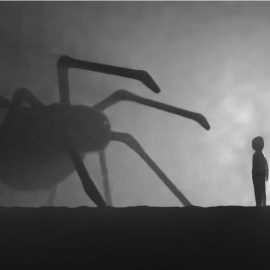
Do you want to have more fun in life? What kind of games are right for you?
Ali Abdaal says people are hardwired to have fun, and fun is a key part of emotional well-being. You most likely know this from experience as a child who spent countless hours running around and making up games.
Continue reading to learn how to have fun in life and release your inner child again.
Sources of Fun
Unfortunately, Abdaal says, many people lose a child’s sense of fun as they grow up. This happens because our culture teaches that adults are supposed to stop playing games and take life seriously. However, you can recapture that youthful feeling of joy and excitement by finding the little games in everything you do. Abdaal’s advice for how to have fun in life entails three game-based strategies to help you reintegrate playfulness into your life.
(Shortform note: Using elements of gaming for non-gaming purposes—such as to make work or learning more engaging—is called gamification. In theory, using the elements of games that motivate players to keep playing, like scores and achievements, should also motivate people in non-gaming contexts. However, this is a relatively new field of research; there’s still a lot of debate over whether gamification actually works, and if so, what the best ways are to implement it.)
1. Find Your Gaming Style
Abdaal’s first strategy is to figure out what kind of player you are. If your life were a video game, how would you approach it? For instance, some people want to plan out the most efficient way to complete each quest, while others enjoy simply wandering around and seeing what they find. Some like to entertain their fellow players with jokes and stories, and some prefer to seek out opponents for the thrill of competition.
Once you know what kind of player you are, Abdaal suggests approaching each day with that player’s mindset. For instance, if you’ve decided that you’re a competitive player, you might try challenging a friend at work to see who can get more done during a single shift.
(Shortform note: Figuring out your “gaming style” can be a helpful thought exercise because it helps you get back in touch with the approach to productivity that suits you best. Many experts teach that productivity is all about planning and time management, and they provide endless training sessions and tools to help people schedule their days. However, that approach doesn’t work for everyone. Therefore, thinking of your work as a game and yourself as a player can help you to break that mental association between planning and productivity, and remember how you used to get things done before all of that time management training.)
2. Make Work Engaging
Second, make your work engaging. People can spend hours playing video games because they’re designed to hold your attention: They have bright colors, exciting music, engaging characters, and regular rewards to keep you playing. Abdaal says that you can add any or all of these features to your own tasks.
For example, if you’re preparing a presentation about a boring topic, you could add some bright colors or an amusing picture. Perhaps you could chat with a friend while you work on it, or treat yourself to a small piece of candy after finishing each section of the presentation.
In short, find the joy in what you’re doing, not just in what you’ve gotten done—after all, you play games because they’re fun, not just so you can get to the end.
(Shortform note: Another way to stay engaged while you’re working is to practice gratitude: Occasionally remind yourself of all the things you enjoy about that work, or the reasons you started doing it in the first place. In The Gifts of Imperfection, professor and social worker Brené Brown explains that gratitude will help you find joy in processes, not just in results. For instance, maybe you find going to the gym tedious; you could keep yourself engaged by taking some time beforehand to appreciate the friends you’ve made at the gym, how energized you feel after a good workout, or how much your health has improved since you started exercising.)
3. Recognize That You Do Your Best Work When You’re Having Fun
Finally, recognize the difference between fun and frivolity. Abdaal says there’s a common misconception that people who are enjoying themselves aren’t taking things seriously, as if it’s impossible to give your all and have fun at the same time. However, according to the principles of feel-good productivity, the opposite is true: People can only do their best work when they’re having fun.
(Shortform note: The idea that you’ll do better work when you’re having fun isn’t new; psychologist Mihaly Csikszentmihalyi described the same thing in his 1990 book Flow. Csikszentmihalyi described “flow” as a state of absolute focus where you can do your best work seemingly without effort—and, notably, one of the requirements to enter the flow state is that you must enjoy what you’re working on. This is because negative feelings like boredom and frustration are distracting, so they prevent you from achieving flow.)






